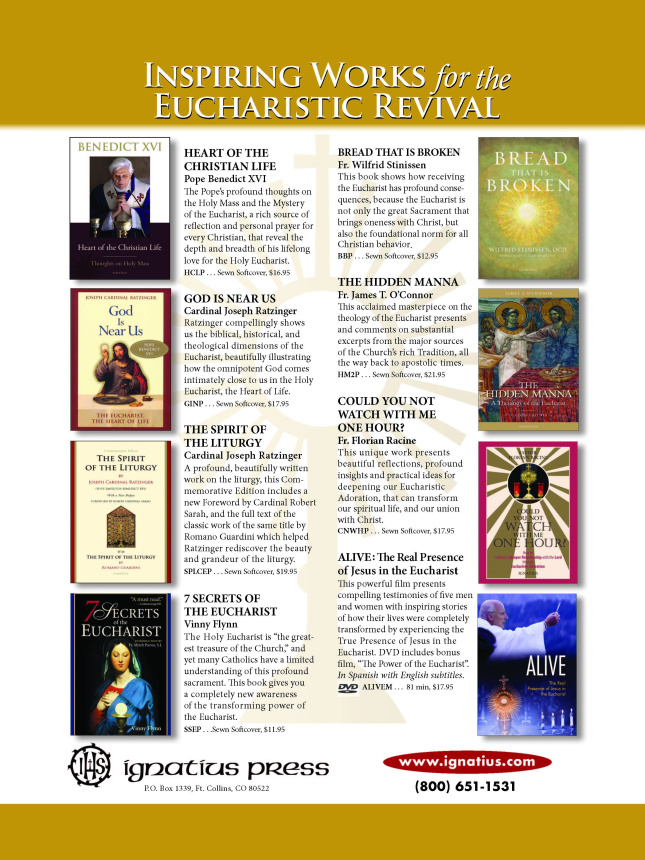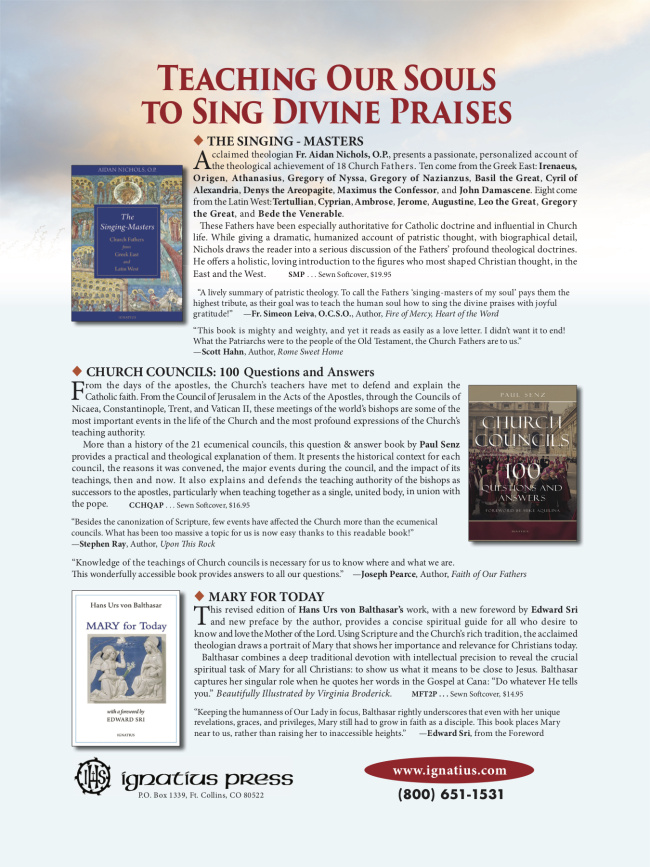Resting in the Lord: Liturgy and Education
In his important apostolic letter Dies Domini (“Keeping the Lord’s Day Holy”), St. John Paul II argues that to rest is to re-member (put together again) the sacred work of creation on the day set aside for worship, thus orienting times of rest toward a deeper contemplation of God’s vision of humanity. “Rest therefore acquires a sacred value: the faithful are called to rest not only as God rested, but to rest in the Lord, bringing the entire creation to him, in praise and thanksgiving, intimate as a child and friendly as a spouse.”[i]
The human need for rest is not a call for inaction or laziness. Times of rest need some form of activity to remove our minds and attachments from the workaday tasks that can too easily become heavy and uncomfortable burdens. St. John Paul II’s use of “in praise and thanksgiving” is shorthand for the celebration of the liturgy.
Embracing the Paschal Mystery
Liturgy, as the celebration of the Paschal Mystery, is the heart of Catholicism. It integrates the divine and the human, the active and the contemplative. “The Paschal mystery of Christ’s cross and Resurrection stands at the center of the Good News that the apostles, and the Church following them, are to proclaim to the world. God’s saving plan was accomplished ‘once for all’ by the redemptive death of his Son Jesus Christ” (CCC 571).
Note
[i] John Paul II, Dies Domini, no. 16.
Editor’s Reflections: Eucharistic Communion and Seeing Those in Need
The Catechism of the Catholic Church tells us that receiving the Eucharist “commits us to the poor” (1397). Why is this so?
Receiving the Eucharist means that we enter into union with the Second Person of the Blessed Trinity. And being in Holy Communion with Jesus himself means something profound. Let’s consider one facet of this great mystery.
AD: Inspiring Works for the Eucharistic Revival
This is a paid advertisement. To order these resources visit www.ignatius.com or call 800-651-1531.

AD: Teaching Our Souls to Sing Divine Praises
This is a paid advertisement. To order these books, visit https://ignatius.com/ or call 800-651-1531.

The Spiritual Life: The Eucharist – Food of Truth and Source of our Salvation
 In a 1978 Lenten catechesis given in Munich, then-Cardinal Joseph Ratzinger spoke of the eucharistic mystery as an incomparable encapsulation of Christ’s transformative self-gift, whose meaning is best expressed in the act of washing his disciples’ feet: “He, who is Lord, comes down to us; he lays aside the gar
In a 1978 Lenten catechesis given in Munich, then-Cardinal Joseph Ratzinger spoke of the eucharistic mystery as an incomparable encapsulation of Christ’s transformative self-gift, whose meaning is best expressed in the act of washing his disciples’ feet: “He, who is Lord, comes down to us; he lays aside the gar
St. Francis and the Pedagogical Power of the Liturgy
In 1947, Pope Pius XII launched (what we would call today) a “new evangelization” of the Catholic Church in his great encyclical letter Mediator Dei.[i] Seen as the Magna Carta of the modern liturgical movement, the Pope sought to use that movement as the principal means for the adaptation of the Church to a radically and rapidly changing world. After two catastrophic world wars, 1914–1918 and 1939–1945, the Church could not simply ignore the fact that the world had dramatically changed and that the Church needed to adjust accordingly.
Renewing the Liturgy
It was, therefore, necessary for the Church to ensure that its spiritual relevance continued to permeate all of modern social life. For the Holy Father, it was the Liturgy that would have the greatest transformative power upon the world in this time of great need because it is the Liturgy that bears the greatest public witness to the faith of the Church.
[i] Pius XII, Mediator Dei.
Catholic Schools: Catholic High School Liturgy: A “Faithful Presence Within”
As another Holy Day of obligation rolls by, the question arises once again about the wisdom and sustainability of current Mass provision in our Catholic schools in Scotland. In our Cathedral parish here in Motherwell, we have three Sunday Masses, but between us as clergy we normally celebrate eight Masses on Holy Days, mainly in school settings, with varying degrees of enthusiasm and participation on the part of pupils. What is the point? Are we (as is often argued) sacramentalizing pupils who have never been evangelized, never mind catechized? In addition, as Catholic schools worldwide also become increasingly multi-faith—with, for example, 20 percent of non-Catholic pupils in Catholic schools today in the U.S. compared with 5 percent in 1972—is compulsory Mass attendance responding to the spiritual needs of all pupils?[1] And how can we strike a balance between the school’s responsibility to celebrate liturgically and the freedom of individual members to either embrace or opt out of such celebrations?
[1] National Catholic Educational Association (2022) Data Brief: 2021-22 Catholic School Enrollment, 1. https://images.magnetmail.net/images/clients/NCEA1/attach/Data_Brief_22_...
Catholic Schools: The Paschal Mystery Time Machine – Teaching Time to Teens

What do the films A Wrinkle in Time, Back to the Future, The Terminator, Interstellar, and Avengers: End Game have in common? They all tap into our innate fascination with time travel. If you could travel through time, where in history would you go? Who would you visit? What would you alter for the sake of the future?
These are strategic questions I use to open the lesson on the sanctification of time. With this exercise, students are first invited into the time machine of their own memory and imagination. After this discussion, I pre-teach some basic doctrinal points about time:
- Time is created by God with a beginning and an end.
- Chronos time is time that we can measure and keep track of with calendars and clocks.
- Kairos time is time from God’s point of view. It is all of time at once in one “eternal now.” Eternity.
- The Eastern concept of time is cyclical. This is how beliefs such as karma and reincarnation emerged.
- The Western concept of time is linear and it has a telos or an end. It is progressing toward the future.
- We can think of the liturgical year as a spiral that is simultaneously cyclical and linear or advancing toward an end.
- Jesus, the Eternal Word, is timeless. (CCC 525)
- The Paschal Mystery changes how we experience time.
The fourfold event of Jesus’ Suffering, Death, Resurrection, and Ascension was so impactful and powerful that it reverberates through time in every direction. It hit history so hard that it broke it in two; that which came before Christ (BC) and that which began with Christ (AD). In the Old Testament, the Paschal Mystery is prefigured through typology and prophecy. In the age of the Church, it is echoed forward in the liturgical calendar. In the sacraments, the Paschal Mystery transcends time. The sacraments are, in a way, the only known means of time travel. When we remember our story and enter into it in the sacraments, we are entering into a dimension of time that is not stuck in the past, present, or future, but envelopes all of it. This is because, unlike any other religious figure, Jesus is not just a person of history. He is alive and actively encountering his people with his life-giving, saving love.
Children's Catechesis: Seasons of Faith – Sharing the Liturgical Year with Young Children

Among the five essential tasks of catechesis, the 2020 Directory for Catechesis mentions “initiating into the celebrating of the mystery.”[1] This task includes teaching learners “to understand the liturgical year.”[2] In the simplest of terms, the liturgical year is the way in which the Church tells time. It unites the Western Catholic Church and provides a framework for us to connect with salvation history as we contemplate our own walk with God.
The themes we find as we experience and contemplate the liturgical year are familiar to us in many aspects of our lives. In Advent, we experience a period of darkness and a promise of light to come. Christmas is a time of joy and hope, an experience of promises fulfilled. Ordinary time is so named because of the ordinal numbering of weeks. Following the liturgical seasons of Advent and Christmas, we begin with the first Sunday of Ordinary time, then the second Sunday, and so on. So it is called ordinary because the weeks are ordered, not because this season is plain or boring. Ordinary time can connect us to those everyday moments of life. This time provides opportunities to find small joys and reflect on everyday things for which we are thankful. Lent is a time in which we might contemplate a crossroads in our lives. Here, we pause for self-examination and take stock of areas in our lives in need of reform. We do penance for those times in which we have fallen short. At Easter, we are aware of new beginnings as we celebrate the Resurrection. At Pentecost, we increase our awareness of the fire of the Holy Spirit as we open ourselves up to the movement of God in our lives.
All these themes are found in the story of salvation history that we explore through the liturgical year. They are also universal to each person in the course of daily life—we experience darkness and hope, death and new life, and look for joy in ordinary moments. What a wonderful gift we have in the liturgical year as a temporal context for our faith and a vehicle by which we can contemplate the essence of human existence. How can we pass this gift along to our youngest learners?
RCIA & Adult Faith Formation: Experience without Substance
Foundational Doctrines Are the Key to Eucharistic Revival
 Several years ago, a Protestant couple came to my parish RCIA to support friends who were becoming Catholic. They came every week for the entire process. After one of the sessions, they asked, very sincerely, “We believe the Catholic teaching on the Eucharist. You say those who do not profess the same belief in the Eucharist cannot receive to protect them from receiving unworthily. Since we believe, why can’t we receive?” I gently explained that to truly profess belief in the Eucharist is to believe all that is connected to the Eucharist. It is not possible to accept the Eucharist while at the same time rejecting the authority that makes the Eucharist possible. The Eucharist is a sacrament of unity.
Several years ago, a Protestant couple came to my parish RCIA to support friends who were becoming Catholic. They came every week for the entire process. After one of the sessions, they asked, very sincerely, “We believe the Catholic teaching on the Eucharist. You say those who do not profess the same belief in the Eucharist cannot receive to protect them from receiving unworthily. Since we believe, why can’t we receive?” I gently explained that to truly profess belief in the Eucharist is to believe all that is connected to the Eucharist. It is not possible to accept the Eucharist while at the same time rejecting the authority that makes the Eucharist possible. The Eucharist is a sacrament of unity.
The Church in the United States is focusing on a National Eucharistic Revival. In some sense, the RCIA process is always one of Eucharistic revival because receiving the Eucharist is the apex of the initiation process. What the couple in the opening story illustrates is that understanding, accepting, and living the Real Presence of Jesus in the Eucharist requires full acceptance of the underlying, fundamental doctrines—not just believing Jesus is substantially present.
The premise of this article is that to convince people of the Real Presence of Jesus in the Eucharist without their acceptance of the underlying doctrines is leading them to an experience without substance. This article will briefly talk about the purpose of, problems involved with, and pathway to leading people to a full understanding of the Eucharist.


